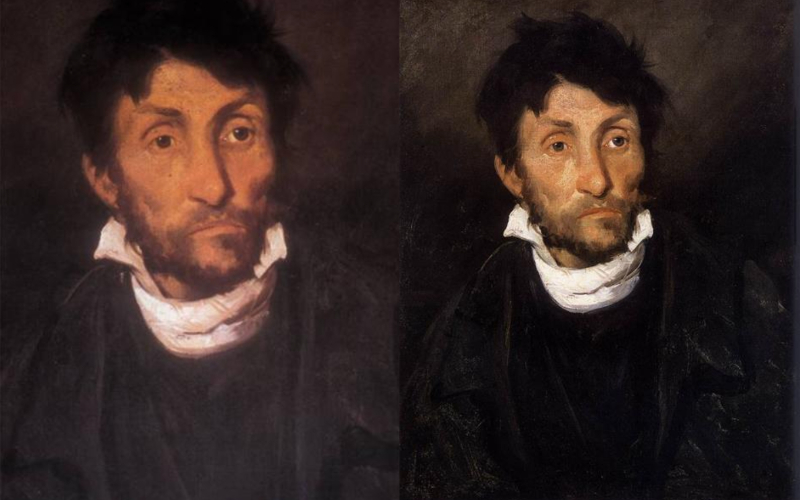Théodore Géricault created Portrait of a Kleptomaniac or Portrait of an Insane Person in 1822. It is currently on display at the Museum of Fine Arts in Ghent, Belgium, and is one of a series of ten portraits created for the psychiatrist Étienne-Jean Georget.
The painting is one of ten portraits of insane inmates from the Paris asylum Salpêtrière that make up a series. The five portraits from the series that remain are Géricault’s final works of art and represent the artist’s greatest achievement.
One of the pioneers of social psychiatry and a psychiatrist by the name of Étienne-Jean Georget commissioned Géricault to create a painting that would depict each clinical model of disease.
Georget thought that dementia was a modern illness that was greatly influenced by social development in industrialized nations. He thought that those who were insane and mentally ill needed help. Instead of bringing the sick people into a classroom to be evaluated physically, the doctor gave Géricault instructions to paint models of various forms of madness. Dr. Georget valued this series of works’ objectivity greatly because it connected romantic art and empirical science.
The work was completed quickly, foreshadowing the Impressionists’ concerns. The painting, however, was not an Impressionist piece. Giving those who were mentally ill dignity at the time was novel because they were typically excluded from society and previous works typically portrayed madmen as possessed creatures or absurd people, in keeping with a medieval belief.
Géricault made an effort to depict the patient’s face objectively: the kleptomaniac’s vacant gaze extends to infinity, and his face is rigid, sporting an unmaintained beard and a filthy neck. The paintings are notable for their bold style, expressive realism, and documentation of people’s psychological discomfort—a fact made all the more poignant by Géricault’s family’s history of insanity and the artist’s own precarious mental health.











